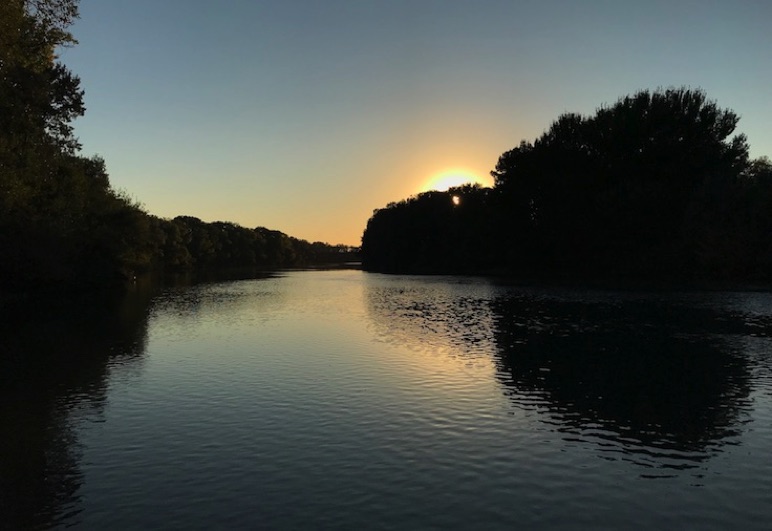
Thursday 4 Oct - big boats, Petit Rhone, Fourques mooring, Arles, theatres
While we were sleeping peacefully around 0500h, the barge started rocking. On getting up to investigate, I saw a big boat disappearing into the distance as it headed eastwards. It would be fair to say that it scared the crap out of us, since we didn’t expect to experience any big boats while we were still in the canals. However, we saw our second big boat at 0900h, when an 85m 2-person & dog barge went by close enough for Rita to have a conversation with the lady on board, and find out that they were transporting coal from Sete to Avignon, and were going back to Sete for another load.
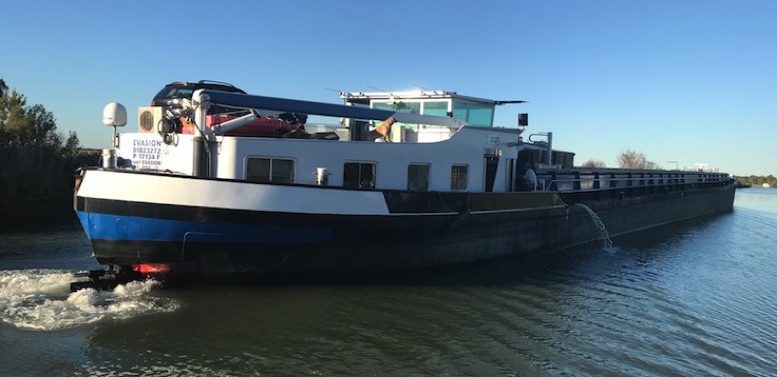
Then a third big barge went by at 1030h. This was 105m long (it was written on the side of the boat).
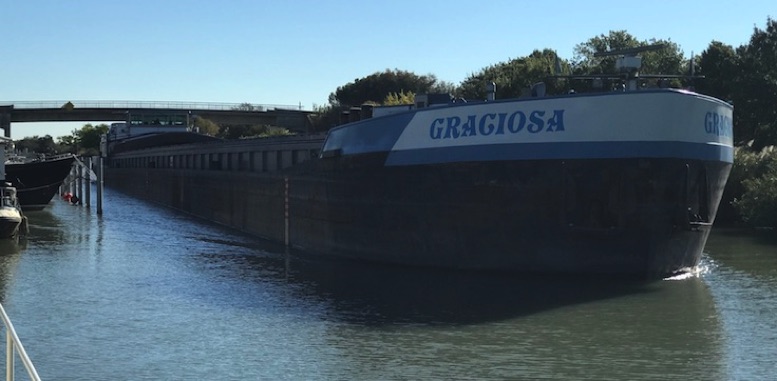
Little did we realise at the time that these were relatively small barges and that bigger things were yet to come.
Having not been able to find the boulangerie in town, we made tracks at 1040h after the big barge had passed, and headed for our intended mooring at Fourques, just before entering the River Rhone.

Soon we were seeing more Camargue horses along the banks of the canal.
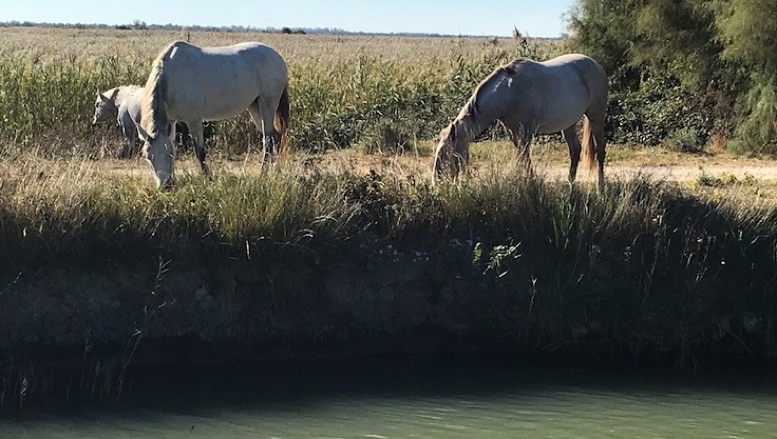
Our next experience was the big, but shallow, lock at St Gilles (200m x 12m x 0.5m rise). Rita called ahead on VHF18 to alert the eclusier of our approach, with a banter that went something like this (but all in French): “Bonjour Ecluse St Gilles, peniche de plaisance Kanumbra, 17 metres in length, two people aboard, approaching at PK29, final destination Avignon. Request instuctions for entering the ecluse”. We would then listen for a response, and ask for clarification if the transmission was not clear (it was often a bit crackly).
This time, we were told to wait for two hotel boats to emerge and tie up at a mooring, and then enter the lock.
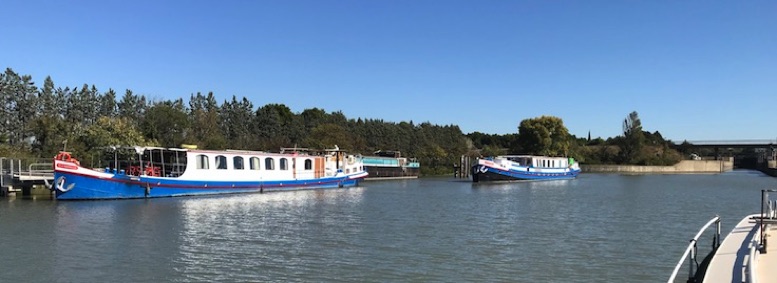
There were fixed T-bollards in the wall of the lock, but they were at bad spacings for us to tie up at front and back, so Rita climbed the ladder and used the bollards on the quai. Although the rise was only 0.5m under normal conditions, the lock was several metres deep to allow for flood conditions, since on the other side it opened into the Petit Rhone River.

The transit through the lock was uneventful, and we were soon out onto the Petit Rhone.
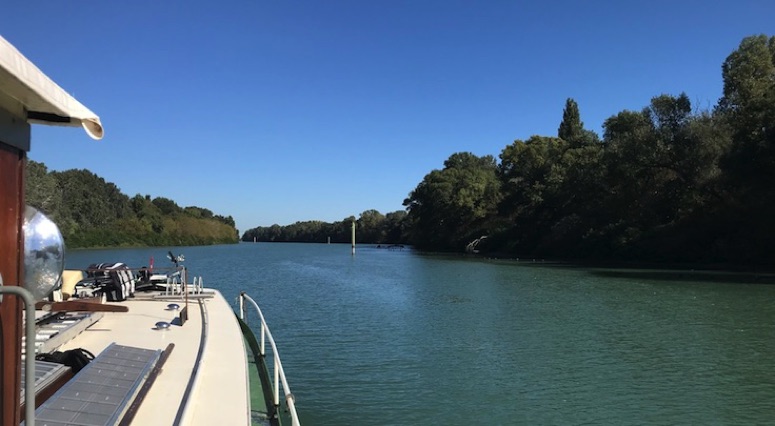
We noticed that the PKs (now called PRs) were marked on each of the red and green navigation poles, which made identification of where you were much simpler than looking for other landmarks. It now became much easier to do the steering while seated, with a foot on the wheel. There was still a bit of the fear of the unknown - what’s around the bend, will moorings be available when needed etc - but otherwise it was very relaxing. The Petit Rhone was very similar to cruising on the Tarn.
We continued along the Petit Rhone, and then moored early for the day under the Fourques Suspension Bridge, with the intention of heading onto the Rhone itself in the morning.
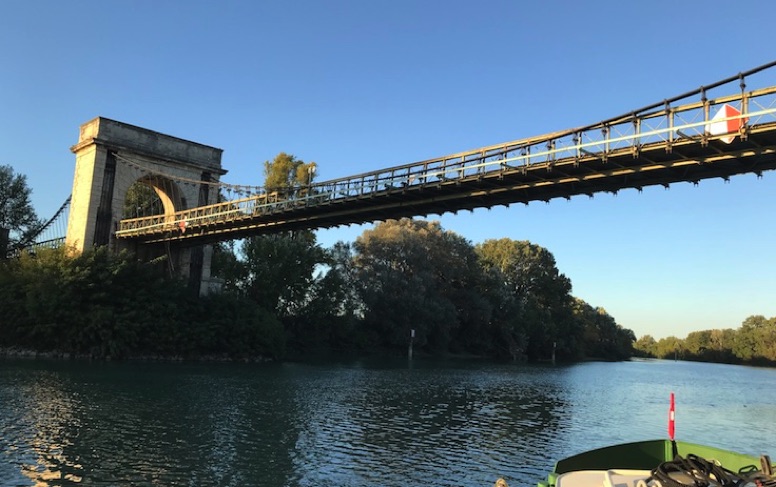
We were pleased to find the Fourques mooring empty, because there were no other options available in this area. There were three poles, with bollards on top, to moor to and a wooden jetty to allow access to the shore. All-in-all, it looked to be a very pleasant mooring location.

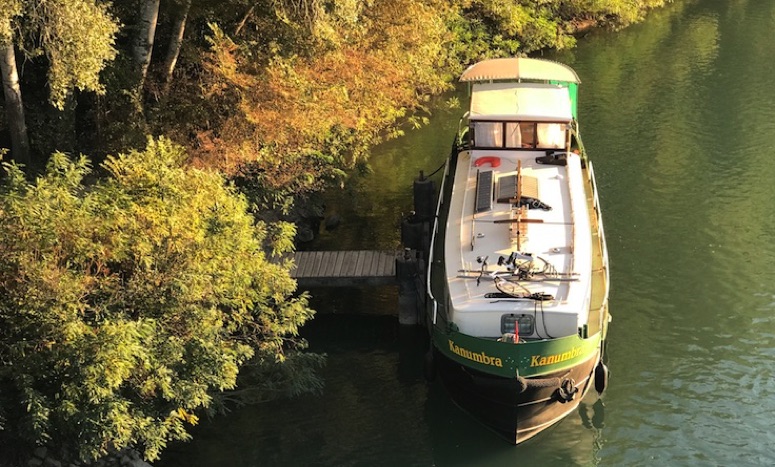
Since we had arrived in the early afternoon, we decided to go for a walk through the neighbouring town of Trinquetaille over to Arles. And what a surprise this turned out to be! All I really knew about Arles was that this is where van Gogh had spent some of his time, so it was rather appropriate that one of the first things we saw was an art class with lots of students sitting in the sun sketching the cathedral and other buildings around the town square. This student was making a good fist of sketching the entrance to the cathedral.
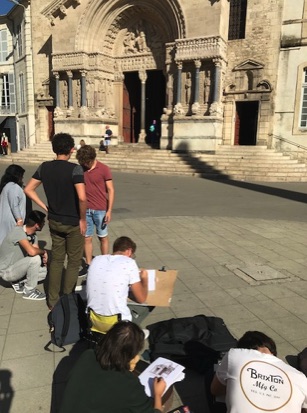
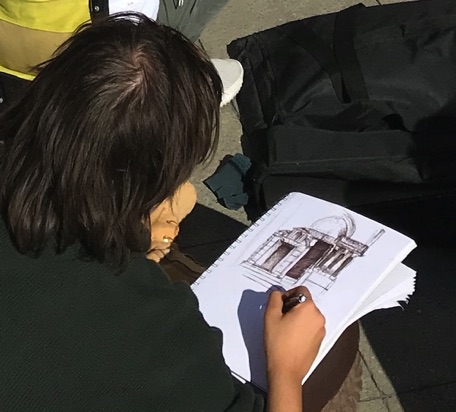
However, I was unaware of the ancient Roman history of the town. As we strolled around the town, we discovered an ancient ampitheatre that still functions as an outdoor theatre space for Arles.
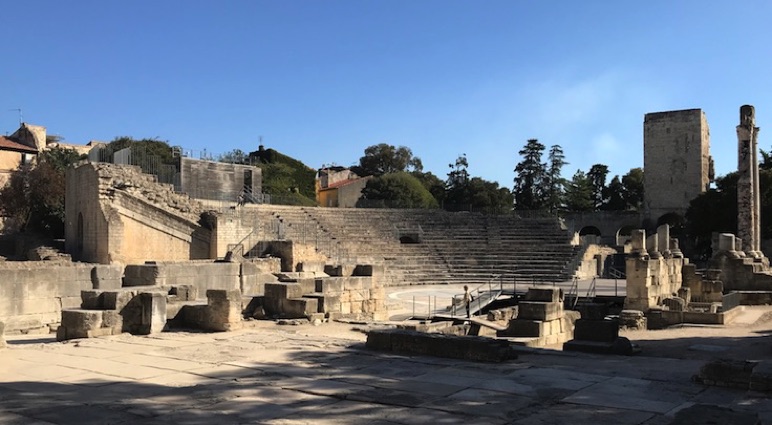
We were even more stunned 100 metres further on to find this intact “colosseum” arena, which is also used for modern day events. Simply amazing, so we sat down at a nearby cafe to take in the view and think what it must have been like at this very spot 2000 years ago.

As we sat in the cafe, Rita saw a girl and a guy walking down the street carrying a bicycle wheel. Since one of our tasks in coming over to Arles today was to get some new inner tubes and a repair kit for Rita’s flat tyres, she quickly jumped to her feet and chased them down a laneway. They were somewhat surprised when she tapped them on the shoulder, but they were able to give her directions to a nearby cycle shop. Mission accomplished!

So after we finished our drinks, we followed their directions and headed down the laneway and found the cycle shop and got our required materials. We also found a fabric shop that had some interesting items that Rita was looking for for gifts back home.
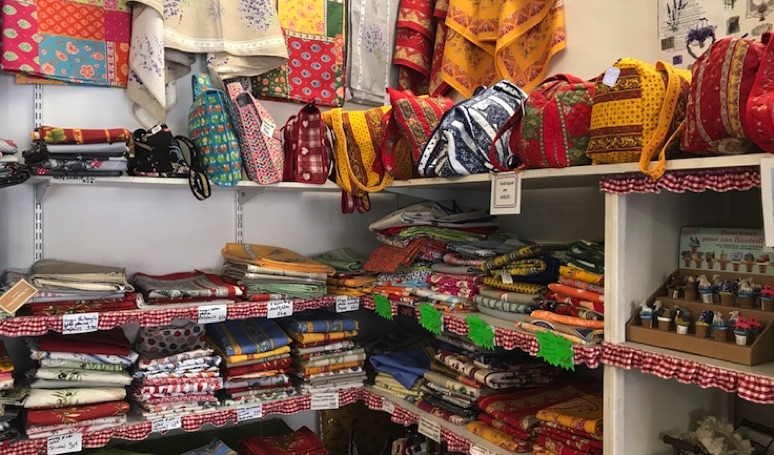
As we had walked into Arles on the bridge over the Rhone, we had seen some huge passenger boats moored in the distance.
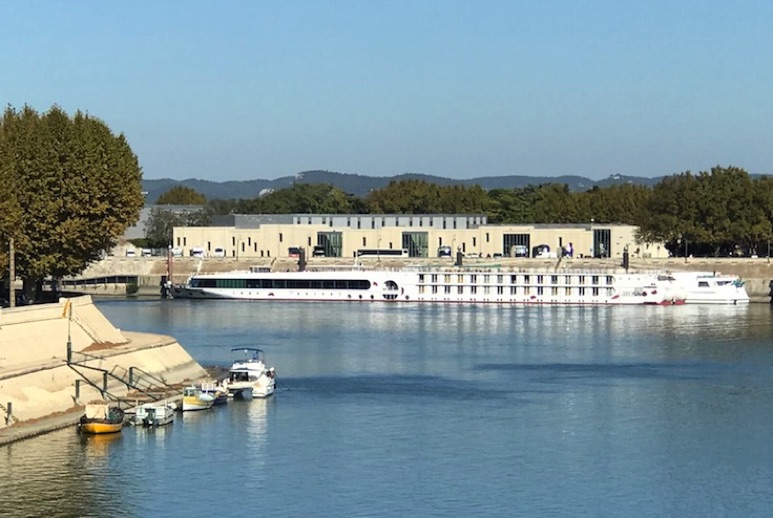
So on the way back, we headed down that way to get a closer look. And they were indeed substantial vessels. Over the next few weeks, we would become good friends with many of them.
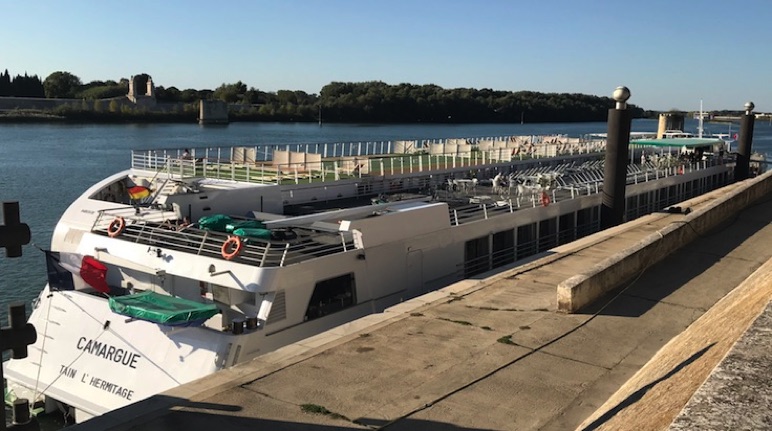
On the walk back to the barge, we found a boulangerie and so got some bread and dessert for the evening. When we got back to the barge, Rita took the opportunity to sit on the back deck and catch up on some reading that she needed to do for her music therapy course.
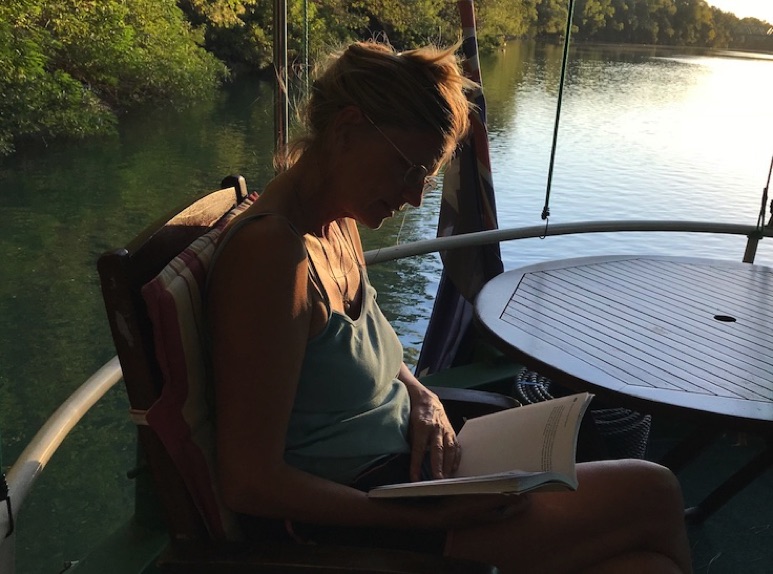
We then settled down for dinner on the back deck, accompanied by a pleasant sunset. We were also accompanied by the “music” from cars going over the bridge above us. Rita’s course is teaching her that there is music everywhere, if you listen for it, and we found this to be the case with the “clacketty-clack” of the cars rumbling over the suspension bridge. Just think of that old 1960’s song by Napoleon XIV “They’re coming to take me away, ha-ha, he-he, ho-ho…."
